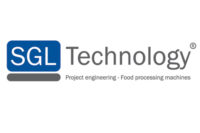For the global confectionery industry, the outlook is positive looking forward to 2025. Steady growth is forecast across the board, with the global market area achieving a CAGR of an estimated 3.4 percent in production by 2025. Increasing disposable income, growing urbanization and the rising trade market are key factors driving the sector, along with a growing consumer demand for convenient and indulgent products.
Manufacturers are facing high demand as a result, and consumers’ thirst for choice is challenging companies to deliver a range of products that will satisfy that demand, often resulting in production schedules being stretched. In addition, the regulatory landscape continues to broaden, with the Food Safety Modernization Act (FSMA) coming into force in the U.S., for example, and a growing shift away from the traditional Hazard Analysis and Critical Controls (HACCP) approach to ensuring food safety to Hazard Analysis and Risk-Based Preventive Controls (HARPC).
The HACCP framework requires manufacturers to review operations to identify points in the production process where contamination could potentially occur. When a risk is identified, then a Critical Control Point (CCP) is identified where product inspection will take place to mitigate the risk. Unlike HACCP, Hazard Analysis and Risk-based Preventive Controls (HARPC) is not a global standard, but an updated U.S. standard incorporated into FSMA. It applies to almost all food processing facilities, both in the U.S. and abroad, who produce food products for distribution in the U.S.
Both HACCP and HARPC require manufacturers to identify potential hazards in their respective operations. HARPC includes naturally-occurring hazards and intentionally-introduced hazards, and requires that companies develop a written analysis of the above hazards and include both an identification of the risks, as well as an analysis of the risks as they relate to (or could relate to) the facility and the food or food ingredients it handles.
Confectioners understand that, as they ramp up production to meet this growing demand, they must continue to protect consumer health and safety by adopting either HACCP or HARPC plans in order to prevent harm both to consumers and to their company’s brand image – which can be considerable if a product recall becomes necessary. To manage these challenges, manufacturers in the confectionery sector are increasingly relying more heavily on product inspection technology and the wide-ranging benefits it brings to busy production lines.
Advanced contaminant detection
In all food manufacturing processes, there is a continual risk of contaminants being present in the product. These include not only contaminants that exist in incoming raw materials, but also those that can be introduced during processing and packaging as machine parts wear. For confectionery products, the most common contaminants are glass, metal and high-density plastic equipment fragments and mineral stone.
When metal is the only potential contaminant, a metal detector is the best solution. Where multiple foreign contaminant materials are potential, an X-ray system will provide broader detection capability. Both inspection system types are available in configurations to meet a wide range of applications, from bulk products to packaged products. Automated rejection systems can remove contaminated products from the production line when identified without stopping the production process, preventing them from reaching the marketplace and potentially harming consumers.
Importantly, both metal detectors and X-ray inspection systems carry out contaminant detection and rejection of contaminants inline at high speeds. This means that manufacturers do not have to reduce line speeds and sacrifice productivity levels to achieve 100 percent inspection of packaged product. In addition, today’s sophisticated systems not only inspect product, they also capture detailed inspection data that puts manufacturers on a strong footing with major retailers, but also provides instant access to due diligence information in the event of a product recall or FDA inspection.
Quality is everything
The confectionery sector presents multiple quality control challenges to manufacturers, and product inspection systems ensure that only items in perfect condition reach the retail supply chain.
Inspecting confectionery package seals to ensure products don’t interfere with complete sealing is one element to consider when dealing with packaged sealed products, and there are a number of examples of how product inspection has helped to alleviate challenges in this area.
A confectioner in Sweden, a producer of a favorite chocolate in the region, had decided to package heart-shaped chocolates in sealed trays of clear plastic. Shaped chocolates can sometimes bounce out of line, while stray pieces of chocolate can easily compromise the seal, and inspecting by eye proved to be a labor intensive and fallible process. By installing a specially adapted X-ray system, the confectioner was able to ensure 100 percent inspection of seals, while the operators previously designated to carry out visual checks could be reassigned to focus on other activities.
X-ray systems are also capable of carrying out zoned fill-level checks, for products that are presented in defined compartments, to ensure each component of a package is correctly in place. Missing or broken items can also be identified, as well as incorrect fill levels – which can lead to significant savings if products are being overfilled on the line, and to improved customer satisfaction if under-filled.
Checkweighers are also often placed on production lines to control fill levels and can be built to meet specific applications, environments, regulatory and industry requirements. Confectionery products almost always have to comply with strict weights and measures parameters, and the ability to check weights accurately is vital to quality control and compliance. Advanced checkweighers are able to identify and reject products that fall outside of the set parameters, and can also feed data back directly to upstream filling and forming machines if it is a consistent issue – a feature that is also possible with X-ray systems.
Finally, in addition to fill level inspection capabilities, vision inspection systems are often used to ensure correct labelling, coding and marking (including lot numbers and best by dates and 1D and 2D barcodes) on finished items, while confirming the presence and quality of graphics, label quality, position and the identification of any obvious packaging defects. It is especially critical for manufacturers to check that the correct allergen declarations are included on labels – and are readable – to ensure the safety of consumers and avoid potentially costly product recalls.
Working with experts ensures maximum productivity
Product inspection is a key component in modern confectionery manufacturing operations, and having a solid inspection program in place is vital to both safety and quality. Working with an expert supplier is highly recommended, as the supplier’s help with decisions on equipment type and positioning on the can have a serious impact on the total cost of ownership of the equipment and also the company’s return on investment.
Working in partnership, product inspection experts can make informed recommendations as to how to extract the very last ounce of productivity from their systems, while providing an ongoing support network to ensure that everything runs smoothly and as expected. Having complete trust in line equipment is paramount and gives manufacturers the confidence to focus on production – leaving inspection to the experts.





